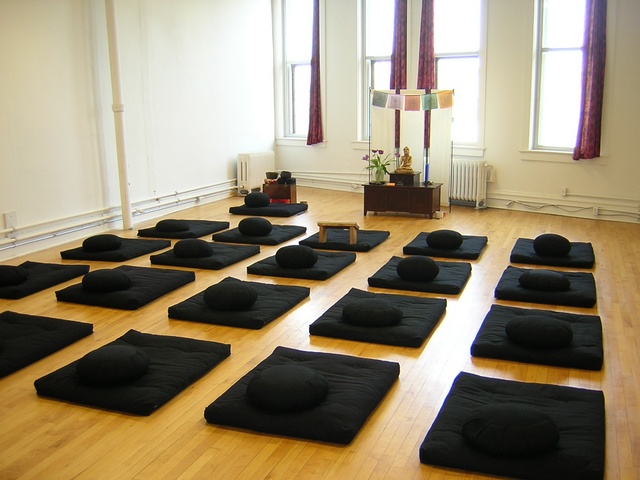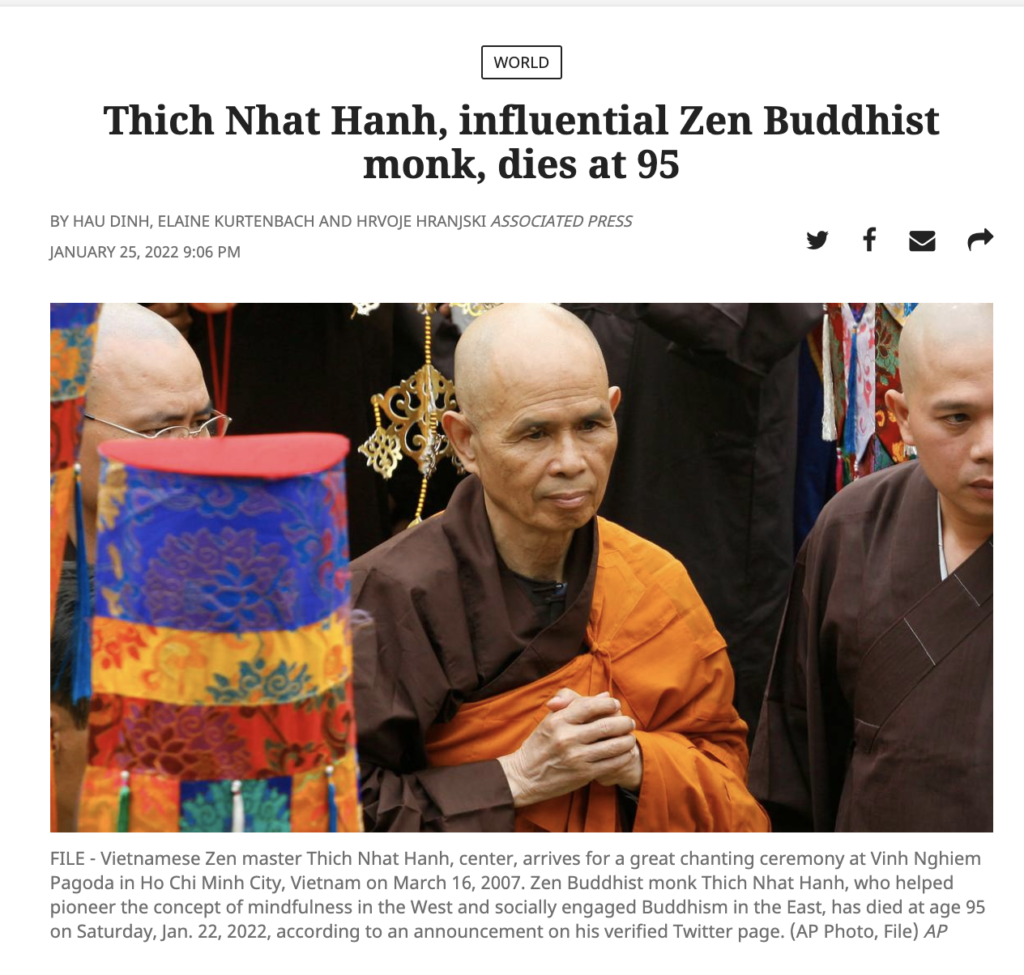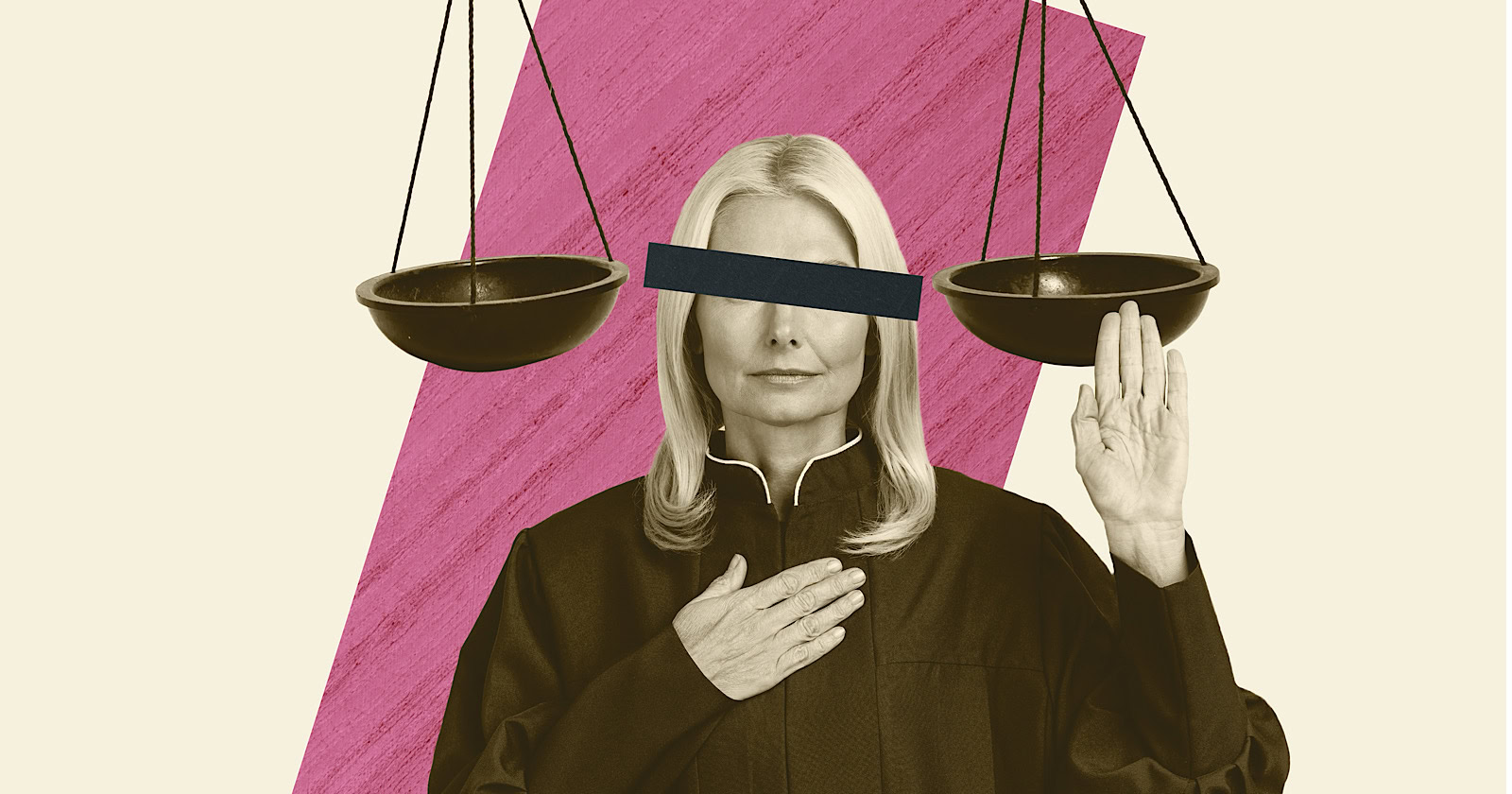What to Do When Someone Steals Your Cushion
A story and practice about finding freedom from self during a seven-day Vipassana retreat The post What to Do When Someone Steals Your Cushion appeared first on Tricycle: The Buddhist Review.

A story and practice about finding freedom from self during a seven-day Vipassana retreat
By Lisa Ernst May 25, 2024 The Northfield Buddhist Meditation Center. Photo by Scott Schumacher, Flickr.
The Northfield Buddhist Meditation Center. Photo by Scott Schumacher, Flickr.“Emptiness is all well and good, but what happens when you walk into the meditation hall and someone has stolen your cushion?” This, or some version of it, is a common refrain among Buddhist teachers, and, on a recent retreat, I had a chance to explore this question for myself.
I had arrived at a Vipassana retreat center in the rural north, a place new and unfamiliar to me. It was rustic but spacious, and each participant had a private room, a luxury not always available at retreat centers. After I set up my room, I went to the meditation hall to select a cushion and blanket from the storage closet. These items would be my physical practice support for the weeklong retreat.
The closet’s shelves were stacked with options: small square cushions, benches, fluffy zafus (typically round meditation cushions) and flattened, frayed older ones. I sifted through the stacks until I came upon a firm but pliable zafu that felt just right for me, to which I added a knee-support cushion for longer sits. On my way out I chose a thick blanket for the hardwood floor.
In the meditation hall I set up a spot by a wall about midway between front and back, then I left to explore the grounds before dinner.
That evening, as I entered the meditation hall just before the first practice period, I saw a young woman sitting on my cushions in the very spot I had chosen! My body tensed, my mind in a quandary, “I spent so much time finding the right cushions and setting up my spot. Should I confront her?” As the session was about to start and most people were already meditating, I decided not to disrupt the peaceful atmosphere and I returned to the storage closet to find a new set of meditation props. At this point, everything was already picked over, and I grabbed a few flimsy, threadbare cushions and a thin blanket. With the room full of meditators, I had only enough space to set up a spot at the very back, even though I might not hear the teacher as clearly.
As I settled into my meditation posture and breath, I felt the tension in my body, still frustrated that my well-chosen spot had been stolen. My legs were already falling asleep without proper cushion support. My mind churned with stories about this selfish person and how I had been inconvenienced, forced to choose worn-out cushions and a misbegotten spot at the back that no one else wanted. In those moments, “I” and “mine” were in the driver’s seat. I took it personally.
Buddhism teaches that we suffer when we create a sense of “I and mine” out of circumstances and things that ultimately don’t belong to us. The law of impermanence means most of what we cling to and believe is ours will eventually slip through our hands, despite our efforts to hold on. This doesn’t mean we don’t protect our property and care for our bodies and loved ones, but it does clarify that no matter our best efforts, we will come to lose much of what we hold dear.
I stewed in my resentment on the flat hard zafu and second-guessed my choice to not confront the person on “my” cushions. As I practiced bringing awareness to my reaction, I began to see the contraction, irritation, and thoughts arising independently from myself. This is a form of practice where I disidentify from thoughts and feelings as “I” and “mine” and view them objectively as an observer. This allowed me to investigate the thoughts and internal tension with less reactivity. I considered speaking with the woman during the upcoming break, as we hadn’t formally entered silence yet, but I made no firm decision.
The law of impermanence means most of what we cling to and believe is ours will eventually slip through our hands, despite our efforts to hold on.
Could I truly lay claim to a spot, to cushions, to the peace of mind I thought I had lost by sitting in a less ideal space? In fact, I was sitting on a cushion in a meditation hall surrounded by dedicated meditators. This place or that place, this cushion or that, was irrelevant at that moment. The silence enveloped me as the dilemma faded away. As I let go, I settled into this moment with equanimity.
At the end of the sit, our teacher offered meditation hall protocol instructions. The woman who had taken my cushions asked if she could move into a yoga position called viparita karani, or legs up the wall pose, so she could stretch her hamstrings during meditation sessions. (Now I know why she chose my spot—it was by a wall!)
The teacher was taken aback. After verbally stumbling around for a few minutes, she admitted no one had asked her this before. Then she recommended that the young woman stretch during the walking periods in between formal sits to avoid disrupting others. I thought this was quite reasonable, but the woman, voice rising, defended her need to perform these stretches. The teacher suggested they discuss it privately at the end of the session. But instead, the woman jumped up from the cushion and stormed out of the meditation hall.
Later that evening, I saw the woman carrying her bags as she exited the grounds. I realized this woman who had stolen my spot was likely troubled and not ready to do a seven-day retreat. This situation reminded me that selfish behavior often masks suffering and pain. My heart went out to her. The next morning, I returned to the original spot and cushions I had chosen. I continued my practice, grateful that I didn’t take her actions personally.
Practice Suggestions for Working with a Stuck Sense of Identity
Often, when we’re hurt, feel inadequate, or otherwise struggle to make peace with ourselves, we may have thoughts that we’re not OK this way, we shouldn’t feel this way, we shouldn’t have these thoughts, etc.
When we do this, we oppose what’s happening and we may even try to clutch on to an idea that we hope will feel better. Sometimes, changing channels is wise. But especially if we are coming up against the same theme again and again, it can be beneficial to learn to stop the dialogue and take a closer look at what’s really happening.
In order to stop our racing me-centered narratives, first we need to make peace with what’s arising in our minds and hearts and to see it as it is. What is the ego, or what we think of as the ego, doing? The next time you are feeling troubled over a sense of entitlement or ownership over a physical object or identity, try the following exercises:
Bring to mind a situation that unsettles you related to your sense of identity, perhaps something that you want to happen but isn’t happening, someone who isn’t acknowledging you, or overlooking you, perhaps something you tell yourself you shouldn’t focus on or a reactive pattern you can’t break. Settle in with it. Find where the associated sensations are in your body. Is there a burning sensation? Discomfort? Don’t try to change it, just let it be. Let go of your attempts to change or rid yourself of this aspect of “ego,” which is actually the practice of letting in what’s present. Let go of the storylines, or just let them float and move, not engaging with them directly. See if you can enter your experience. Slowly settle into your heart, enter the very center of this experience you may think of as ego. Often, what we see as ego is something that needs our attention and compassion. Stay with it if you can, perhaps putting your hand over your heart to feel the warmth of your own care. Embrace it like a close friend in pain. Slowly, through kind and loving awareness, the sense of stickiness and solidity can ease into equanimity. The sense of “I” begins to unwind and we have more access to clear seeing and wise action, if called for.![]()
Thank you for subscribing to Tricycle! As a nonprofit, we depend on readers like you to keep Buddhist teachings and practices widely available.
This article is only for Subscribers!
Subscribe now to read this article and get immediate access to everything else.
Already a subscriber? Log in.

 Astrong
Astrong 































